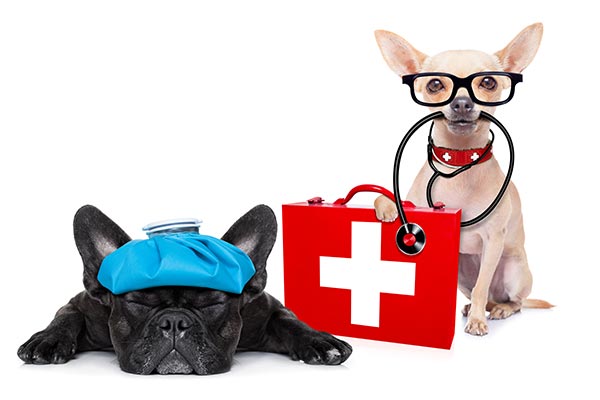Pet First Aid Every Owner Should Know

Everyone knows that your pet is like another member of the family. You want to be able to take care of them like you would take care of yourself in an emergency, whether it’s big or small.
The best way for a pet owner to do this is to know some basic pet first aid that can help out in a dire situation.
It’s important to note, however, that at the end of the day, no matter what happens to your pet, you always should follow up with your veterinarian. Very much like the professionals at Academy Animal Hospital, only trained veterinarians should administer extra-detailed practices to help a pet in need.
Here are five tips connected to pet first aid that every owner should know.
1. Have a pet first-aid kit
A pet first-aid kit is very much like a human first-aid kit. It holds all the necessities needed if your pet gets hurt or sick.
You should keep it in the same place as all of your other medical supplies or in the area where your pet’s belongings are. Many of the items you already should have in your own first-aid kit can be added to your pet’s as well, such as:
- Emergency contact numbers for yourself, the vet and a nearby animal hospital
- Gauze or nonstick bandages or towels (never use regular bandaids on animals)
- Benadryl
- An eyedropper
- A blanket
Every pet is different, so you’ll want to work with your vet to identify what specific things your animal might need.
2. Understand how to clean a wound
Pets easily can get small nicks and cuts that cause bleeding. Any open wound has the possibility to become infected, so you’ll want to clean it.
Before you begin, you’ll need to muzzle your pet. Although your pet never may bite or hurt you intentionally, pain can cause animals to react in different ways, and it’s safer for everyone.
Once you’ve done this, simply take a piece of square gauze and hold it over the wound for a couple of minutes to let the blood clot. You can clean the wound gently with water as well.
If the wound needs wrapped, gently cover it with gauze. Then call your vet to see what other steps need to be taken.
3. Know the signs of pet distress
Pets show their owners they need help in a variety of ways, and it’s important for you to know when your pet is calling for help.
Watch your pet’s appetite, sleep schedule and energy level. Make sure they don’t eat too fast and choke, and put chemicals and other hazards completely out of reach.
Think of your pet as a child. They need a safe environment and supervision to make sure everything is going OK.
4. Know pet CPR
Just like people should know how to perform CPR to save human lives, CPR for pets can be vital to saving their lives as well. The most common course of CPR for pets is for dogs and cats, and those classes can be found in a variety of places including the Red Cross.
If a class isn’t taught for your specific furry friend, you always can have a conversation with your vet to identify what you need to do to perform CPR on your pet.
In cases where CPR is needed, your pet needs to be rushed to the hospital just as a human would. It only should be used if your pet stops breathing and a pulse isn’t found.
5. Know when it’s a true emergency
At the end of the day, small things easily can become an emergency. It’s important to your pets that you always trust your instinct.
If you feel like a situation is getting out of hand or something isn’t right, take them to the vet or a nearby animal hospital. In cases of injury or illness with a pet, you want to be safe rather than sorry. It easily could save their life.
Pet Professionals Here to Help You
If you’re looking for a trusted animal hospital or veterinarian near you, look no further than Academy Animal Hospital in Greenwood, Ind. Our professional staff treats every pet that walks through our doors like our own, and we can guarantee that you’ll always be happy with the service we provide you and your best friend.
If you need help identifying where to get pet CPR, what should be in your pet first-aid kit or just have general pet questions, connect with us today on our website. We can’t wait to help you and your pet reach your safety goals.
